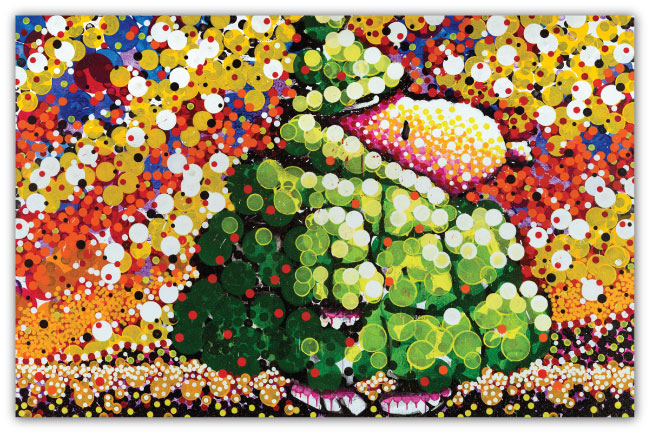|
Rarely is one painting so significant to an artist's creative journey as is Everhart's painting of Puff Doggy Dog. From the moment when a young artist picks up that first pencil, crayon or chalk to make their mark; the search for their own creative voice has begun. Along the way there will be no signposts or maps that will lead them. Typically, the only guide is their own instinct. For Everhart, that search in his early years took him to many places; New Haven, Washington DC, Baltimore, Paris and of course New York. But, despite his deep, East Coast roots, Everhart followed his own inner compass, and it pulled him to the West. When Tom and his wife Jennifer moved out to Venice, it was the light of the California sun that excited him most. As beautiful and artistically inspiring as Baltimore and New York can be, what you rarely get to see in these East Coast cities is the direct light from the sun. Most of the light is "recycled", it's the light that finds it's way to you on the street, after having bounced off a the canyon walls of tall buildings. But, out West, the buildings are far apart, the view to the sky is wide open, and there is very little that stands between you and the sun. Now, in his new home, Tom would fully embrace every bit of sunshine and beauty that it had to offer. From this, his daily constitutional of riding his bicycle for miles along the beach took root. This ride is always filled with many spectacular sights for an artist to take in. But, there was one in particular to which he always looked forward. If he timed his ride just right, Everhart would be riding underneath the Santa Monica pier just as the mid day sun would shine through the wooden slats above. This created a stunning array of long shafts of light onto the path below But, one day after seeing this countless times, Everhart stopped to study the light more closely. What he observed would open the door to new way of seeing. It would change his own art forever. He found what he had been searching for...dots. The thin, bright shafts were constructed by dots of light. He realized that the dots were just an optical illusion. But with that, he realized so is everything that we see. And, there it began. Since that time, dots would become the one constant mark that is found in all of Everhart's works of art: Dots that are dripped, drawn, melted, glued, painted, poured, even cut out of the painting itself. And, the first painting to fully take shape from this discovery was Puff Doggy Dog. Puff Doggy Dog is an artist's celebration shouted from a mountaintop. It's the cry of "EUREKA" at the end of the artistic quest. And, even though it represented the end of a search, it also represented the beginning of its own journey forward.
"It seems that I am more easily explained by what I don't have than what I do. The most misunderstood thinking about my work is that I am licensed to create the images that include the copyrighted subject matter that has so influenced me through the teachings of my greatest friend Charles Schulz. I do not have a license, and have never had one. But Sparky did make certain to arrange a contract early in the development of the work that permitted me to use the subject for the "term of my life ". My work is constructed on the sources of inspiration, creative thought and influences. It is a confession of creative thinking and where it comes from. It examines academics, social interactions, and the traditions of painting to produce work that does not look like traditional paintings." -Tom Everhart
|



